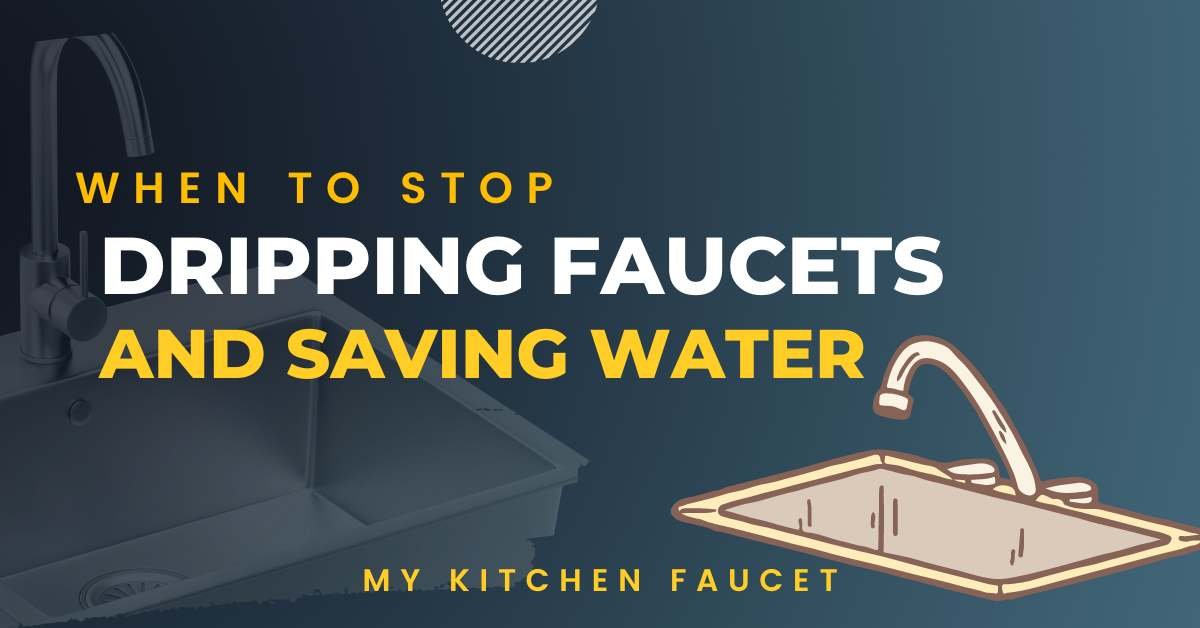Many of us are considering the need to drip faucets to prevent our pipes from freezing due to an impending freeze, yet we must preserve them. Here is the finest advice we could discover for preventing pipes from freezing and water conservation.
Yes, we know it’s important to drip faucets in cold and freezing weather. Otherwise, your pipelines will burst, and you will feel more plumbing difficulties. But have you ever thought about when to stop dripping faucets? How much drip is necessary for the faucets? How much is required in your area, and at what temp should I drip my faucets? We are going to guide you through this article. So keep reading till the end to know when to stop dripping faucets.
Why Freezing of Pipes is an Issue
Water has the unusual characteristic of expanding when it freezes. This expansion puts whatever confines it, such as metal or plastic pipes, under great pressure. No matter how sturdy the container, pipes might break due to increasing water.
The most often frozen pipes are:
- Pipes that are subject to extreme cold, such as sprinkler lines, pool supply lines, and outdoor hose bibs.
- Water supply pipes in internal, non-heated locations such as garages, attics, basements, or kitchen cabinets.
- Pipes that are located near external walls with insufficient or no insulation.
When to stop dripping faucets:
No need to run continuously because of the drip rate of five drips per minute. For the water to flow over the whole length of the system, the dripping faucet needs to be as far away from the water source as is practical.
Any faucet may be made to leak if you are unsure of where the incoming water supply is. It’s a frequent misperception that because the drip keeps the water moving through the pipes, it keeps the water from freezing.
Even though this is helpful, water can freeze while flowing at shallow temperatures. The true reason a dripping faucet can assist in stopping pipes from bursting is that the steady trickle releases pressure that is building up in the pipes between the ice blockage and the faucet and helps stop them from breaking when there is a sudden increase in pressure.
How to Avoid Pipes Freezing:
Follow these suggestions to prevent your pipes from freezing before the winter weather arrives:
Following the manufacturer’s or installer’s instructions, drain water from the supply pipes for sprinklers and swimming pools. If not instructed, do not add antifreeze to these lines. In addition to being hazardous to the environment, antifreeze is also detrimental to people, pets, animals, and landscaping.
Hoses used outside should be taken out, drained, and stored. Close the internal hose bib supply valves. To let the water drain, open the exterior hose bibs. Keep the outer valve open to allow water inside the pipe to expand without breaking it.
Attics, basements, and crawl spaces should all have insulation. Higher temperatures will be maintained in these places through insulation.
How to Avoid Freezing Pipes at Extremely Cold Weather:
If you have water supply lines in the garage, keep the garage doors closed.
Open the doors of the cabinets in the kitchen and bathroom to let warmer airflow around the piping.
Be careful to store hazardous home products up high and out of children’s reach.
Allow the cold water to trickle from the faucet serviced by exposed pipes when it is cold outdoors.
Even a trickle of water flowing through the pipe helps keep pipes from freezing. Maintain the same setting for the thermostat throughout the day and night.
FAQs:
- What temperature is appropriate for covering outdoor faucets?
Before it gets below freezing, cover the outside faucets. It is essential to completely cover outdoor faucets with appropriate faucet covers, especially when the temperature drops below 28 degrees and you believe they won’t withstand the extreme cold.
- When should you be concerned about freezing pipes?
Your pipes are prone to freeze if the temperature drops to 32 degrees or less.
- How warm should a home be to prevent pipes from freezing?
No matter how long you plan to be away from home and on the road, keep your thermostat set at 68 degrees Fahrenheit or higher. This will aid in preventing the pipes within the house from freezing and raising the temperature of the pipes underneath.
Various Valuable Plumbing Advice
One weather safety measure you must take to prevent plumbing issues is to let the faucets drip. Consider safety measures before inclement weather occurs by draining and repairing the water heater, checking for existing leaks, and consulting a certified professional plumber if you discover any plumbing issues. Insulate all outside and inside piping that has the potential to freeze.





